The market for full suspension enduro bikes is becoming increasingly crowded these days. But when a hard-hitting brand like DMR decides to throw its hat into the ring, riders take notice.
And so it was with the official unveiling of the SLED earlier this year – DMR’s first alloy bike, and first full suspension bike designed for proper trail riding and enduro racing. For a brand known best for its flat pedals and steel dirt jumping hardtails, the SLED is a significant departure for DMR, and one that garnered plenty of attention at the 2017 Core Bike show.
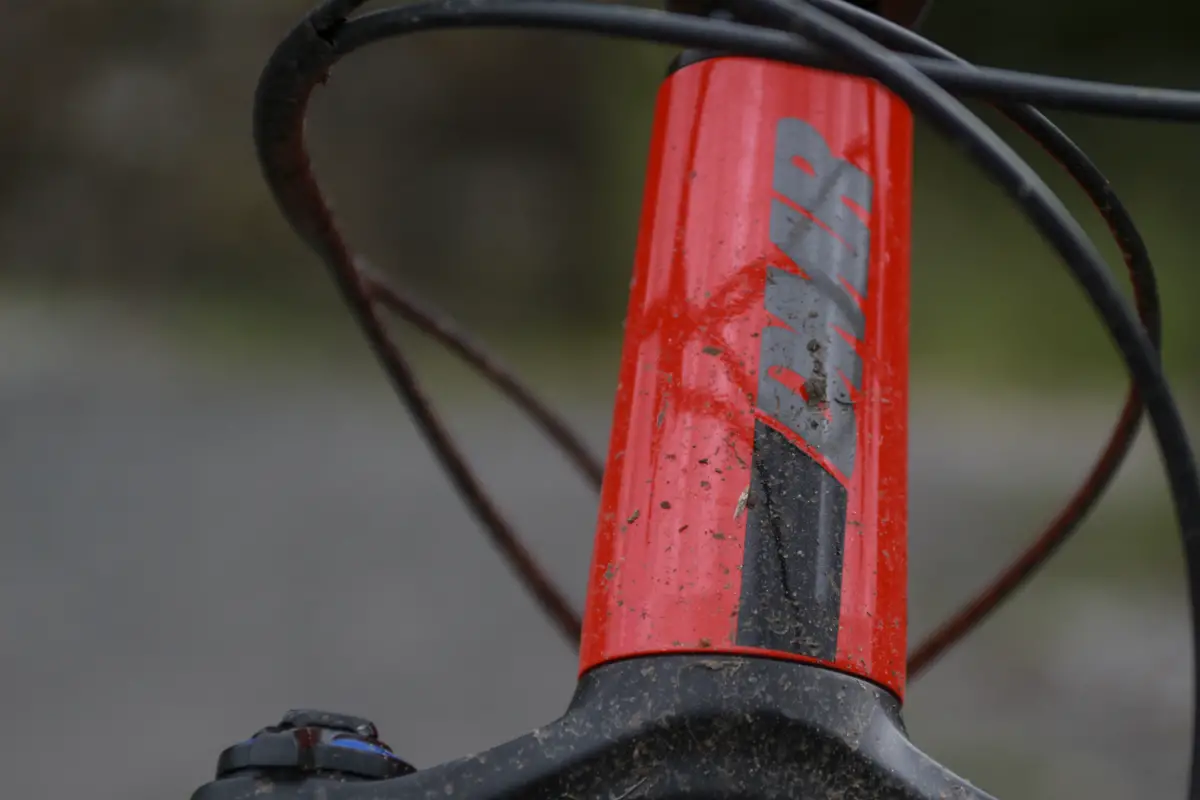
DMR has of course dabbled in full suspension before with the Bolt, which remains in the lineup today. However, with a heavy duty steel frame and simple singlespeed-friendly suspension design, the Bolt is still largely focussed on the slopestyle and dirt jumping sets, rather than being built for straight-up mountain bikers.
As such, the new SLED is a very important product for DMR. It’s the first long-travel trail bike that the company has ever produced, but it also signals DMR’s intention to expand its bike and component range to go beyond the dirt jumps, and deeper into the forest.

On the exterior, the SLED no doubt possesses all the right ingredients for a modern enduro bike. It’s equipped with a burly alloy frame that sits long and slack with 27.5in wheels, and it uses a unique dual-link suspension design that delivers 160mm of travel. It’s got a wide-range single ring drivetrain, an integrated chain device, and it features Boost hub spacing front and rear.
Available as a frame on its own for £1599, the DMR SLED also comes in a complete bike option, which we’ve been testing over the past couple of months. There are four frame sizes ranging from small through to extra-large, and while we think the InfraRed is a suitably scorching paint job, shy types will be happy to know you can have Metallic Black instead.
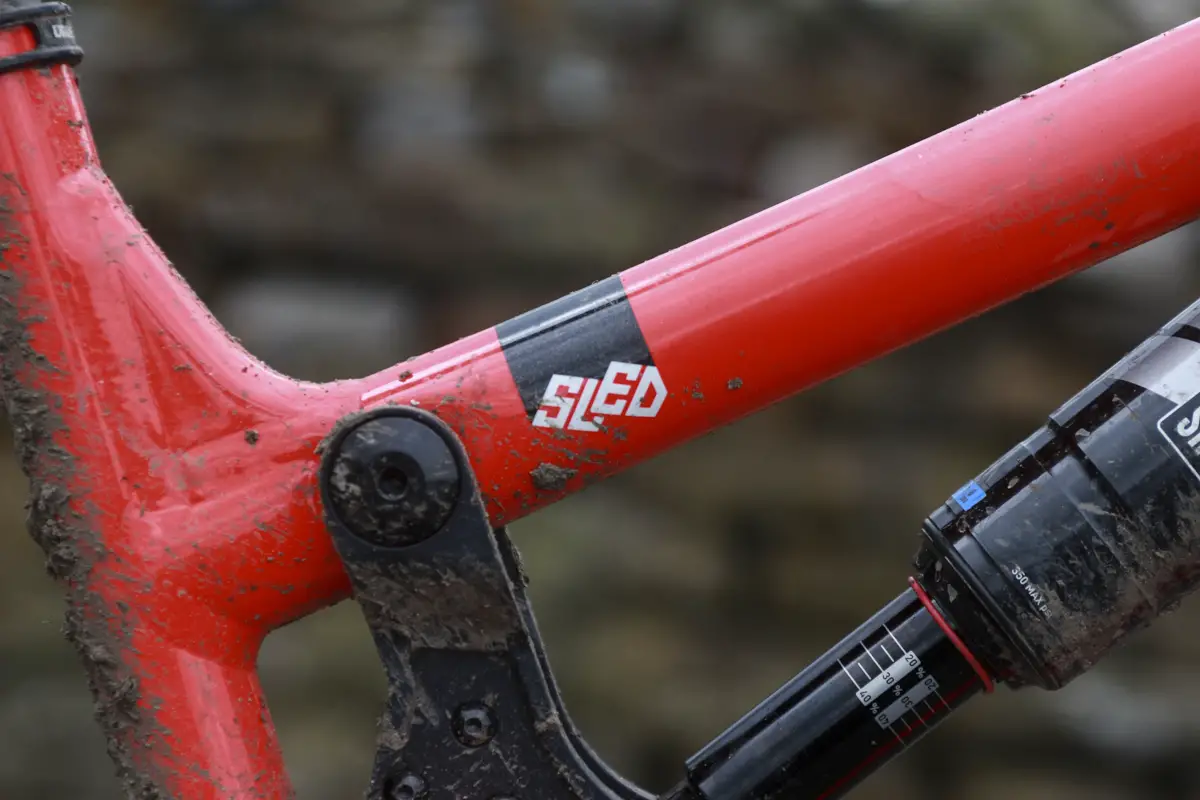
With its given specs, the SLED is aiming to sidle up alongside established big-hitters such as the Specialized Enduro and Cannondale Jekyll. Closer to home, the SLED occupies similar ground to British-designed bikes like the Saracen Ariel, Cotic Rocket and Orange Alpine Six. And you can now add the new Identiti Mettle to that list – a 160mm travel enduro bike that’s also been designed in the UK by a brand better known for its dirt jump products, and has coincidentally become available at almost exactly the same time as DMR’s new SLED.
But enough of the competition, lets take a look at how DMR approached its first-ever full suspension enduro bike, and what makes it different to the rest.
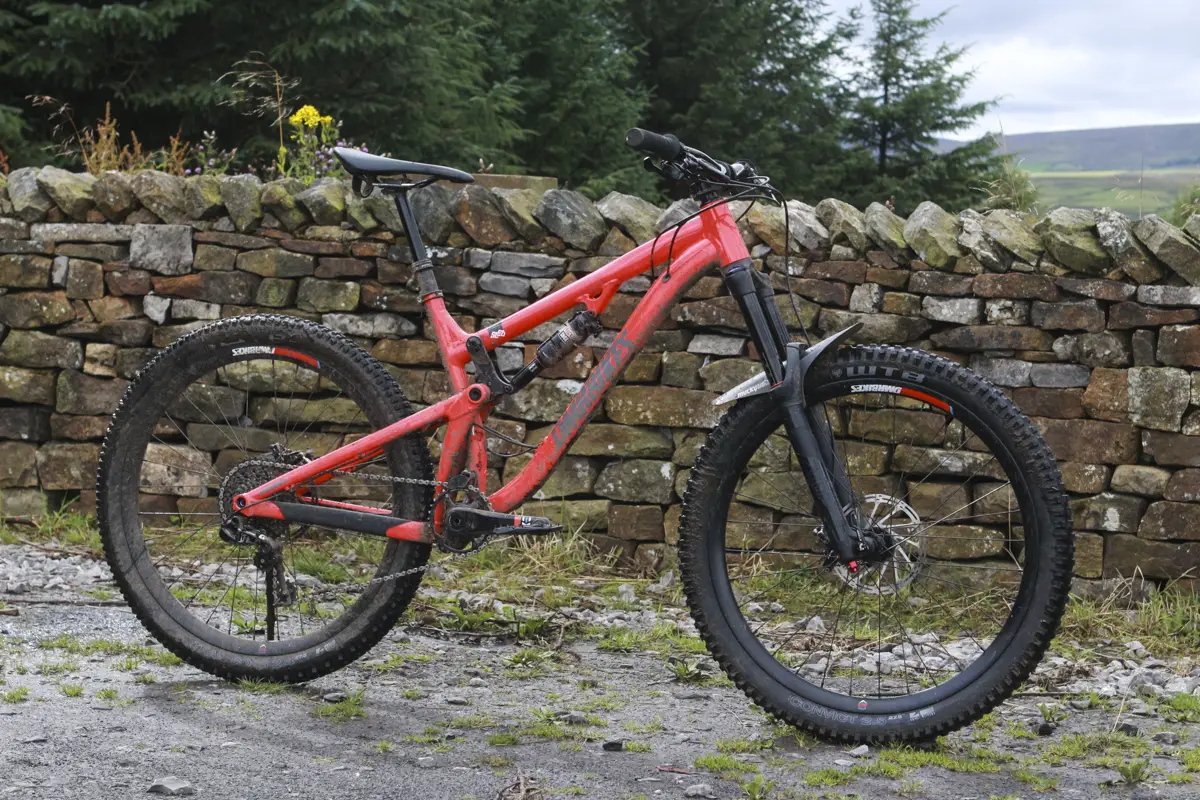
The Bike
Welded together from a collection of curvy hydroformed 6061 alloy tubes, the SLED frame is in a word; burly. DMR claims the frame weighs a portly 3.8kg for a medium size (without shock), and I can believe it. While the tube diameters aren’t enormous, the low-pitched “ding” that comes from flicking the downtube indicates that the alloy walls are quite a bit thicker than usual. Combined with the massive pivot junctions, chunky alloy linkages, generous 148x12mm dropouts and tapered head tube, it’s a frame that looks like it means business. But then coming from a brand that’s used to building the sort of bikes that see regular flat-landings and unplanned casings in their daily routine, would you expect any less of DMR?
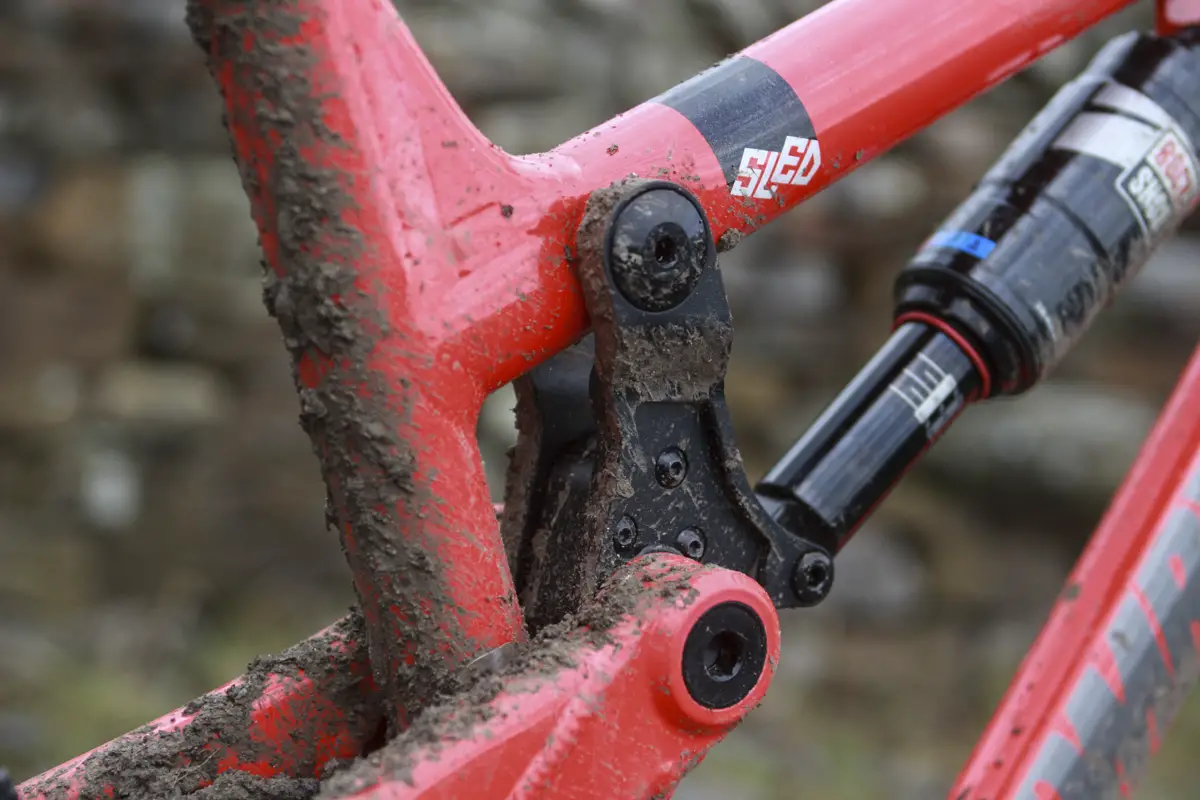

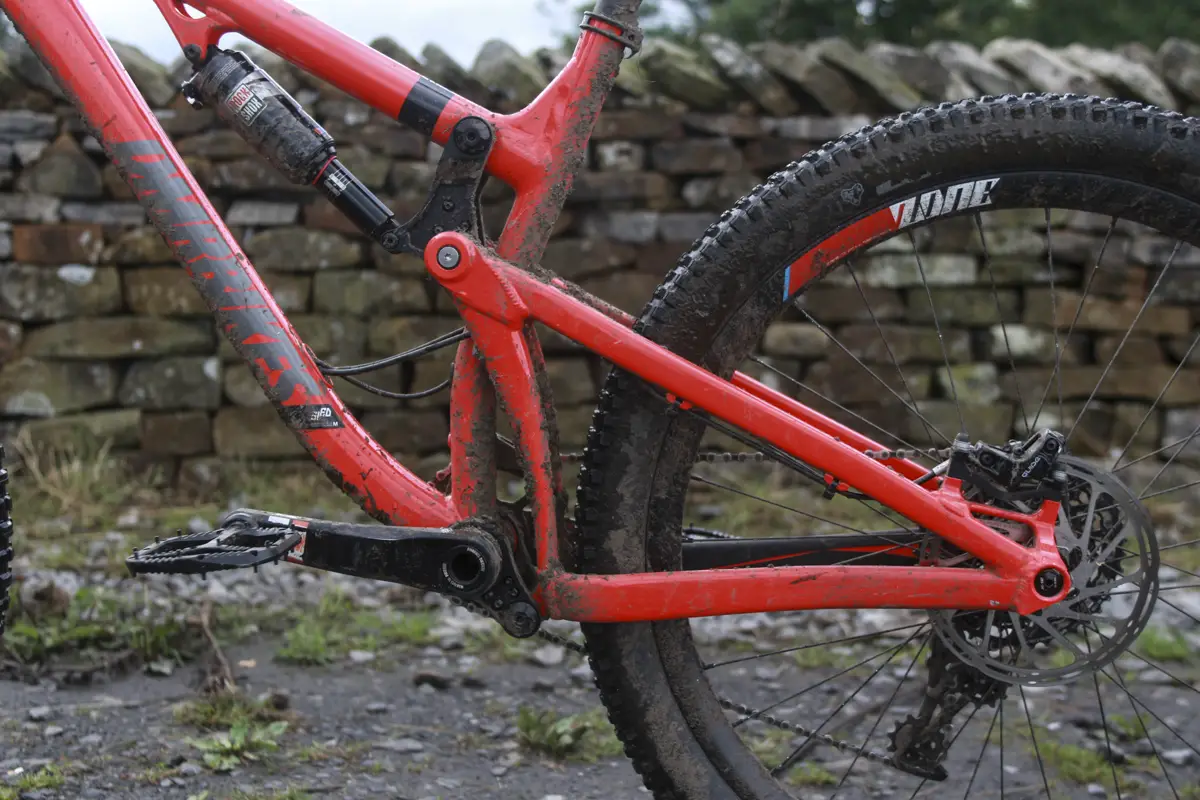
The compact triangular swingarm, dual-link suspension design and top-tube mounted shock give it a somewhat similar appearance to the old Santa Cruz Nomad, but as we all know, looks are but one piece of the puzzle, and the SLED has many pieces.
Most importantly, the suspension platform – dubbed ‘Orbit Link’ – is rather unique. The Orbit Link is made up of two small black alloy linkages, which join the welded one-piece swingarm to the solid mainframe. The upper link connects to the seatstay via a massive expanding collet axle, and this link also serves to drive the rear shock. The lower link connects the lower part of the swingarm to the frame, pivoting – or rather ‘orbiting’ – around the bottom bracket shell, which is where the design gets its name from.
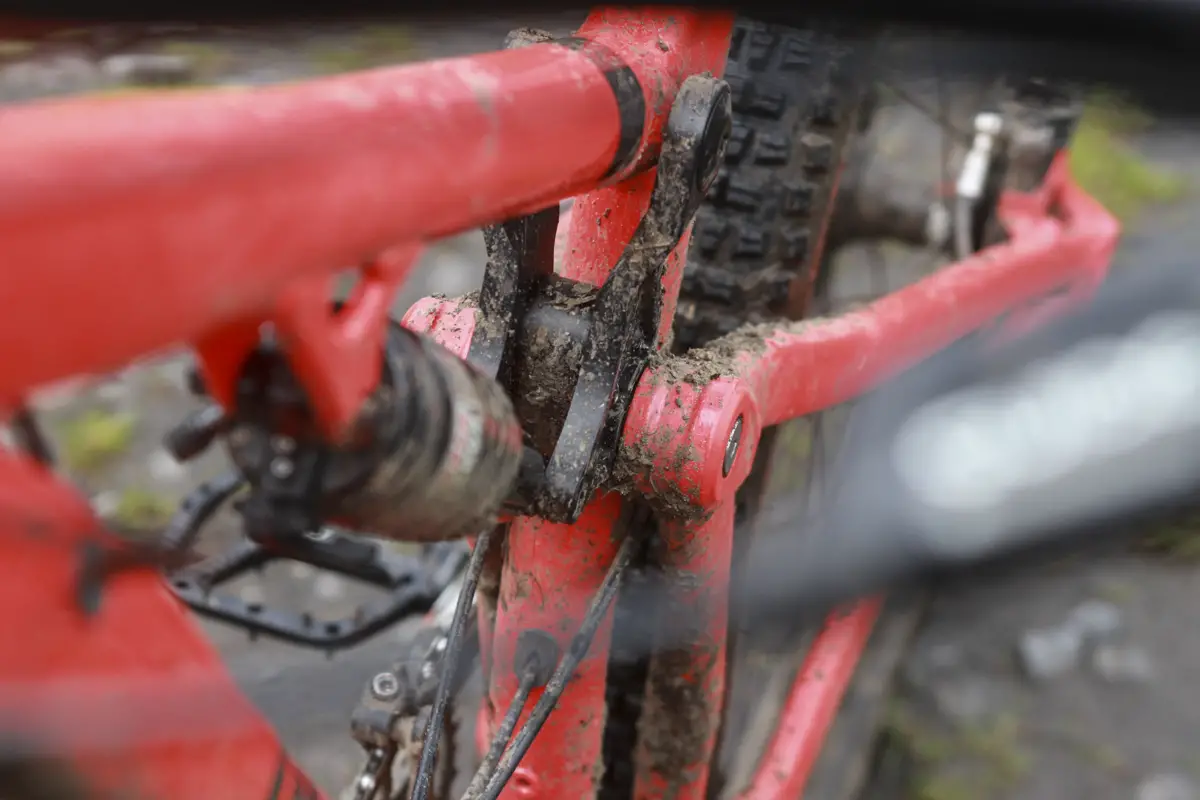
In part, it’s a small nod to DMR’s existing Bolt model, which also uses a concentric pivot around the BB shell. However, the SLED differs in that its a virtual pivot design, and not a single pivot design like the Bolt.
The concept behind the Orbit Link design was born from a collaboration between DMR and David Earle of the Sotto Group. Earle is both a highly skilled engineer and a notable industry veteran, having worked with the likes of Bontrager, Specialized and Santa Cruz over the past two decades. His engineering consultancy, the Sotto Group, worked with Yeti on the Switch suspension design, and he’s also responsible for the Sine suspension that Alchemy uses for the Arktos. For DMR, this would prove to be an invaluable partnership.
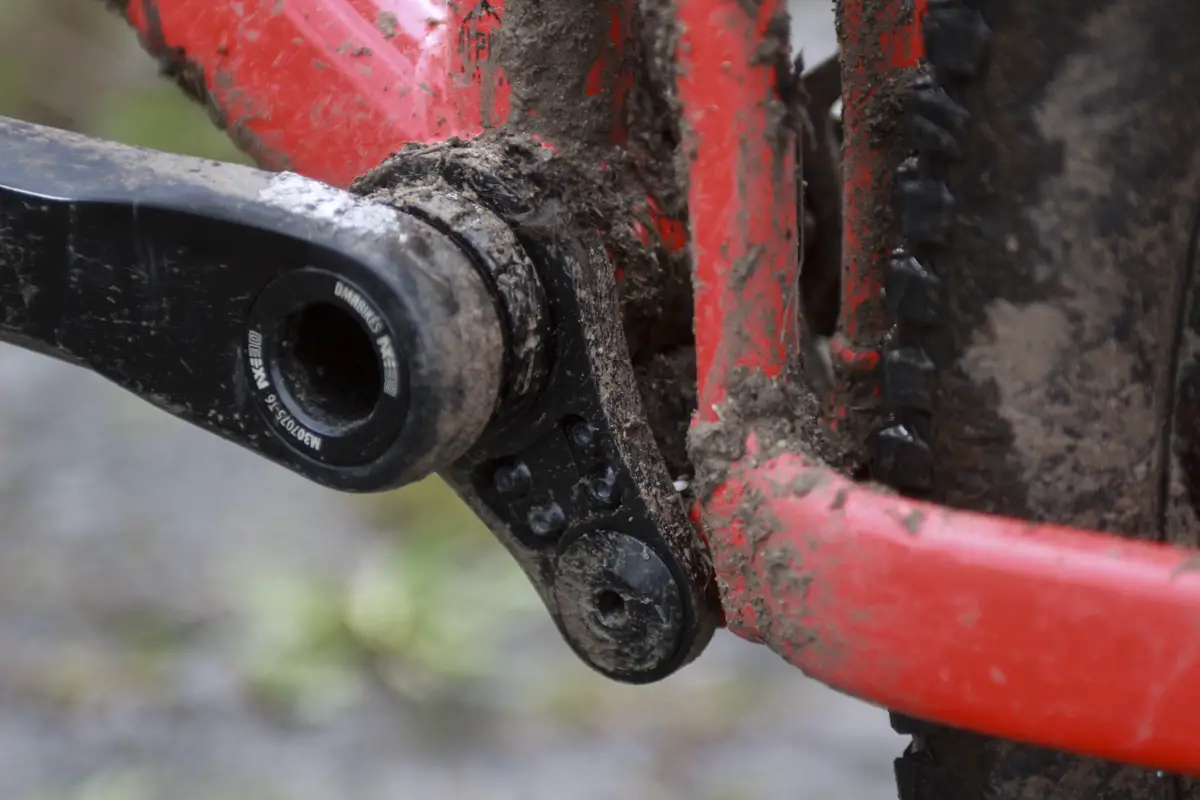
Thanks to the VPP patent expiring a couple of years ago, DMR and Earle decided that a virtual link suspension design would be the way to go. Unlike a Santa Cruz however, the Orbit Link design would see the lower link rotating around the BB shell via two large cartridge bearings. The link itself is made from two halves of alloy, which are bolted together, with the bearings pressed onto the BB shell. The BB itself is a standard 73mm wide threaded shell and is therefore easily serviced.

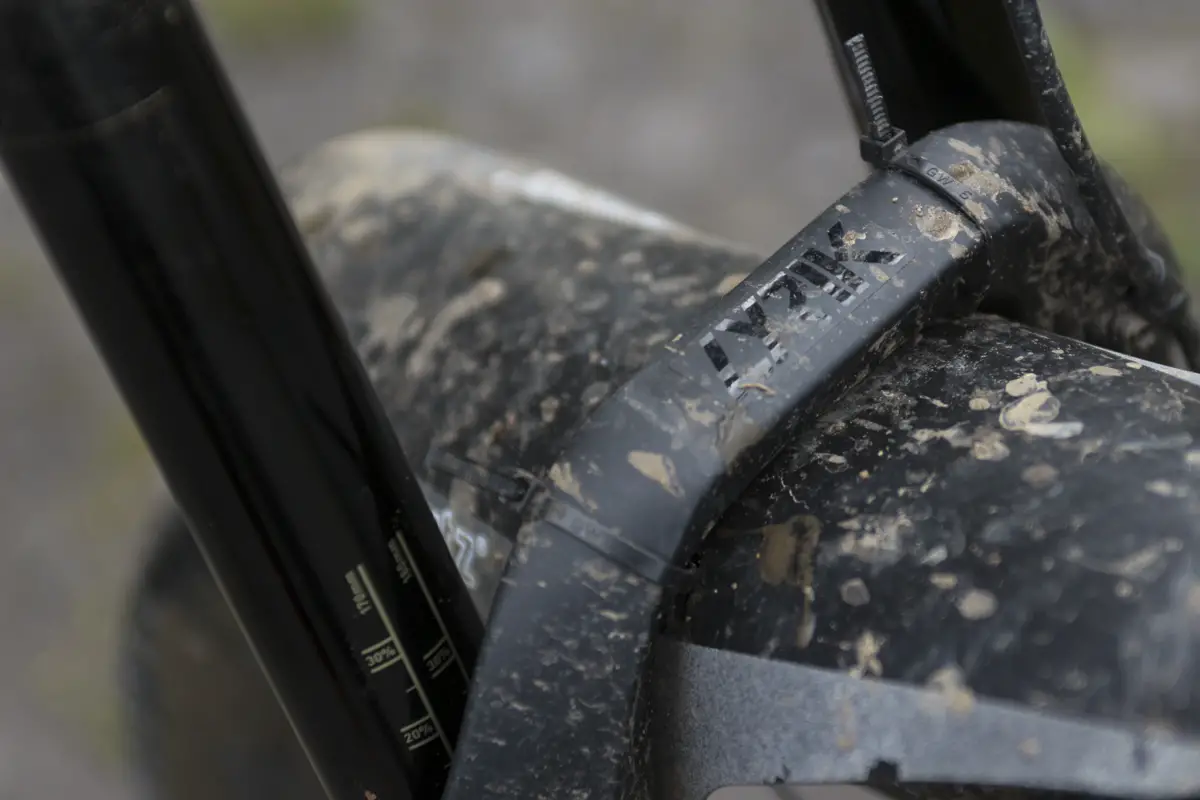
Overseeing the SLED’s 160mm of rear travel is a RockShox Monarch DebonAir RT3 rear shock, which is paired up to a 170mm travel Lyrik RCT3 fork on the front, resulting in a 65.5° head angle. Alternatively, you can run the SLED with a shorter 160mm or longer 180mm travel fork, depending on how you want it to ride.
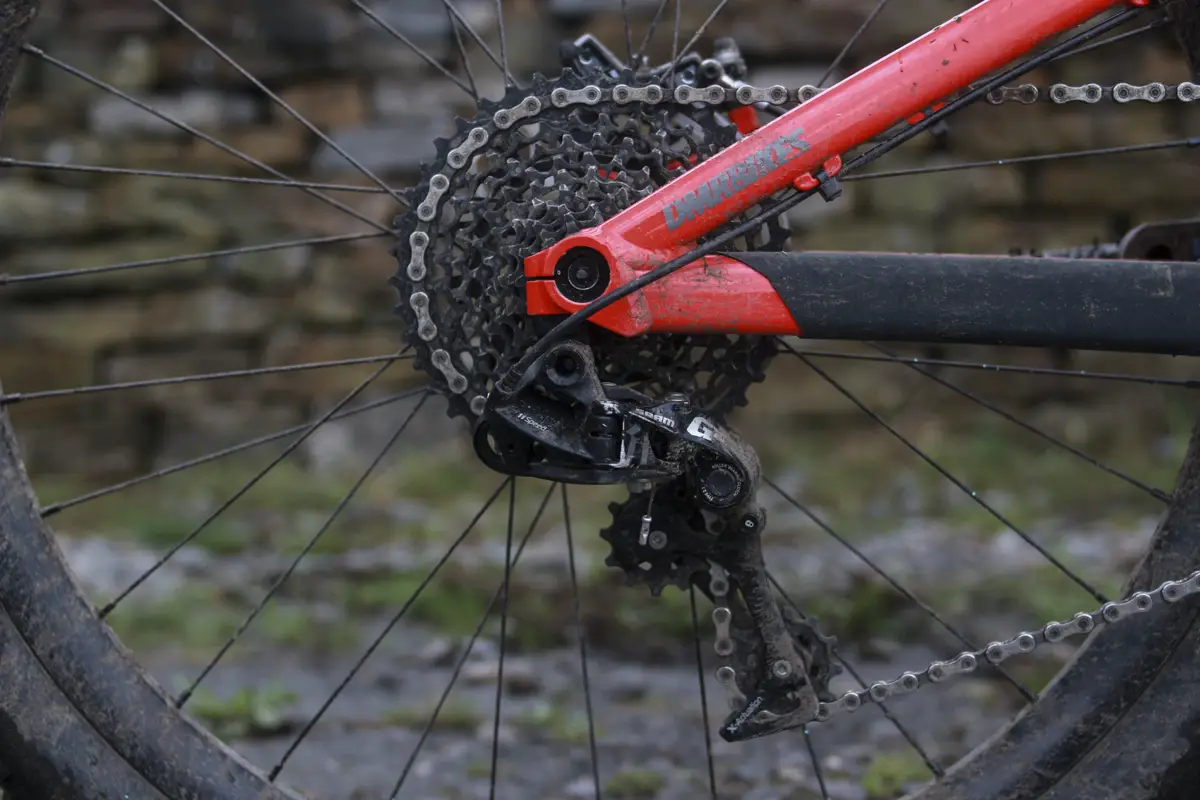
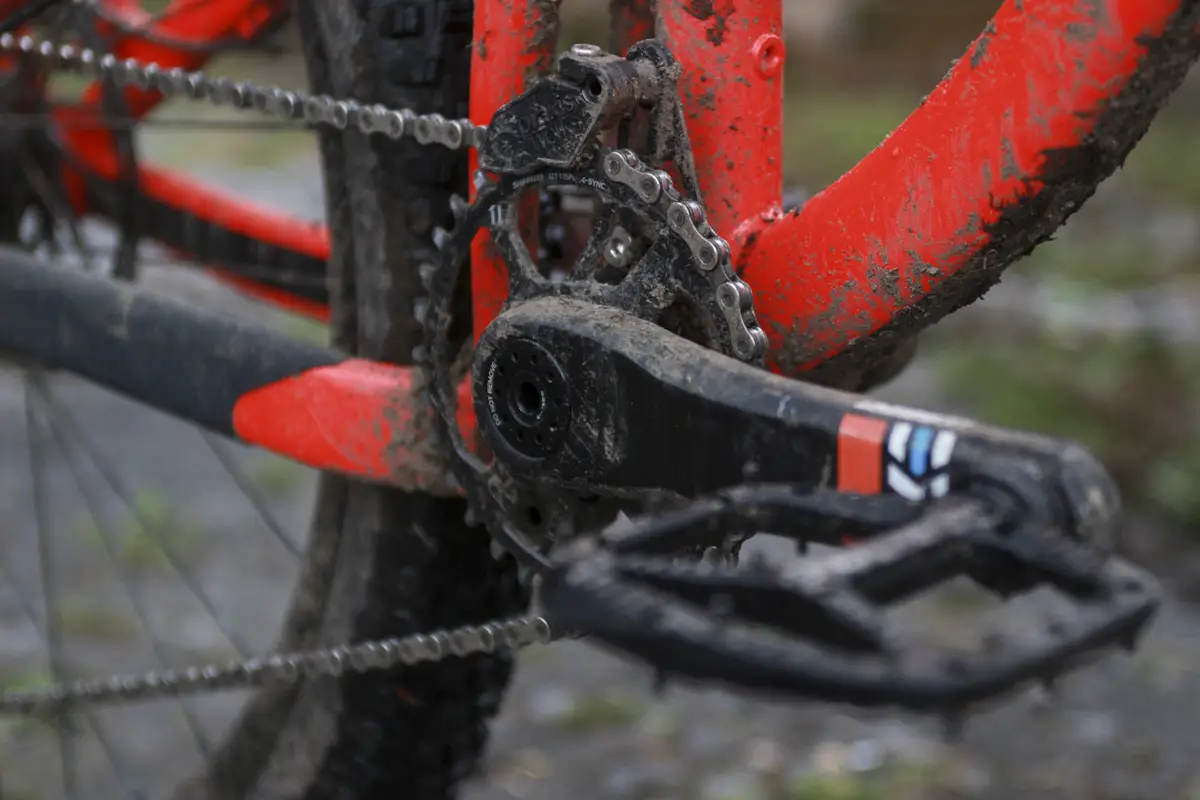
At this point in time, there’s only one complete bike option from DMR, and that’s this one we have here. It’s mostly a SRAM affair, with RockShox suspension, Guide brakes and a 1×11 GX drivetrain. DMR has swapped in its Axe M30 cranks, which feature a 30mm axle and chunky hollow forged alloy arms that makes for a mega stiff platform under power. The Axe M30 cranks run on an oversized threaded bottom bracket from Praxis Works, and they’re dressed with a SRAM X-Sync direct mount steel chainring.
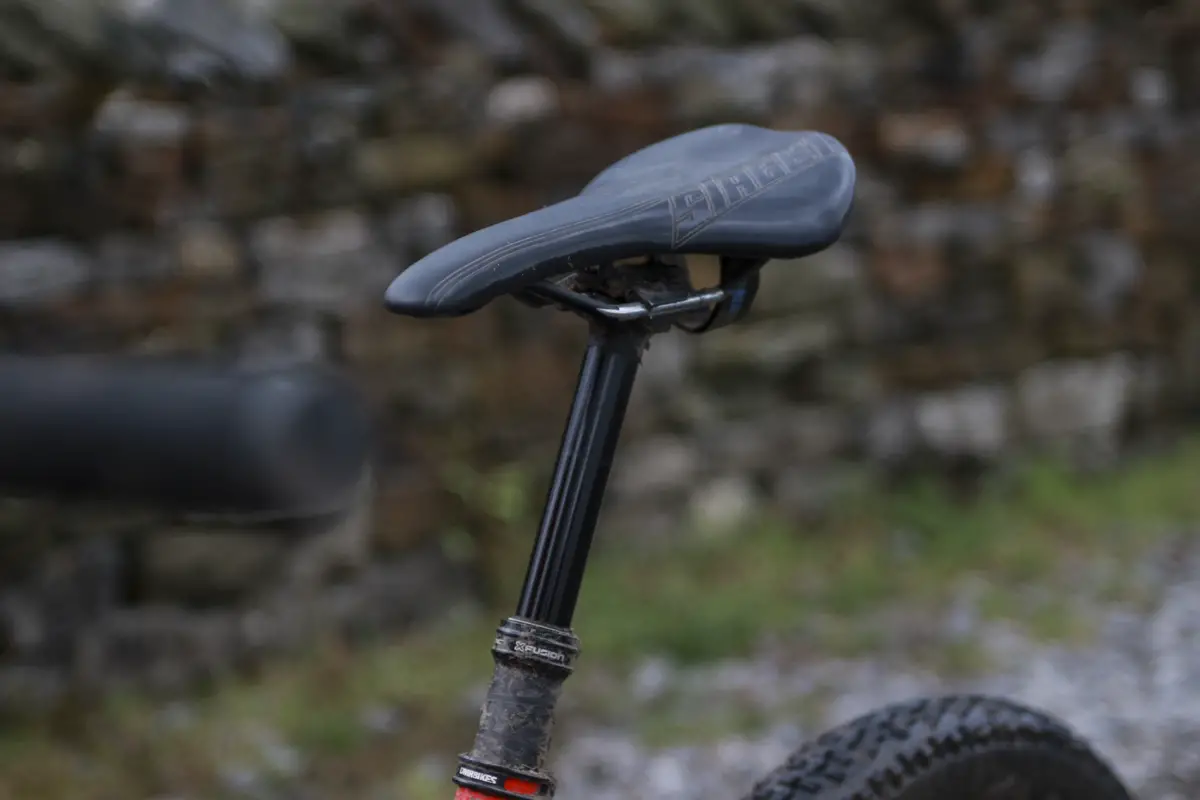
You’ll also find the new X-Fusion Manic dropper post topped with a highly comfortable DMR Stage saddle, and the rest of the cockpit comes from the DMR stable, including the 800mm wide Wingbars and 35mm long Defy stem.
Rolling stock is also DMR, in the form of the no-bullshit Zone wheels. Using welded alloy rims with external nipples and 32 double butted spokes per wheel, the Zone offers up durability and ease-of-service in one. The 24mm internal width is a touch on the narrow side these days, but they are tubeless compatible. The hubs are packed with sealed bearings and a buzzy six-pawl freehub mechanism. All up, the bare wheels came in at 1865g on our scales – not superlight, but appropriate for a bike that’s built for ragging.
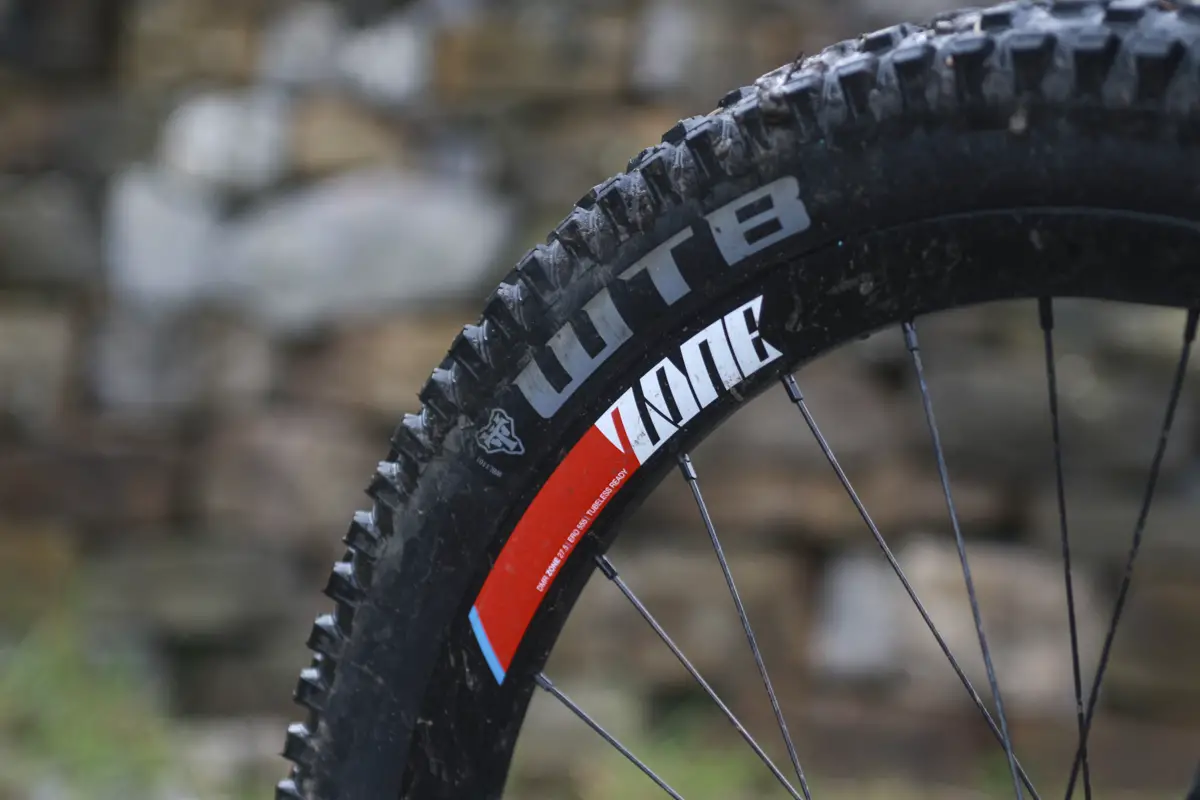
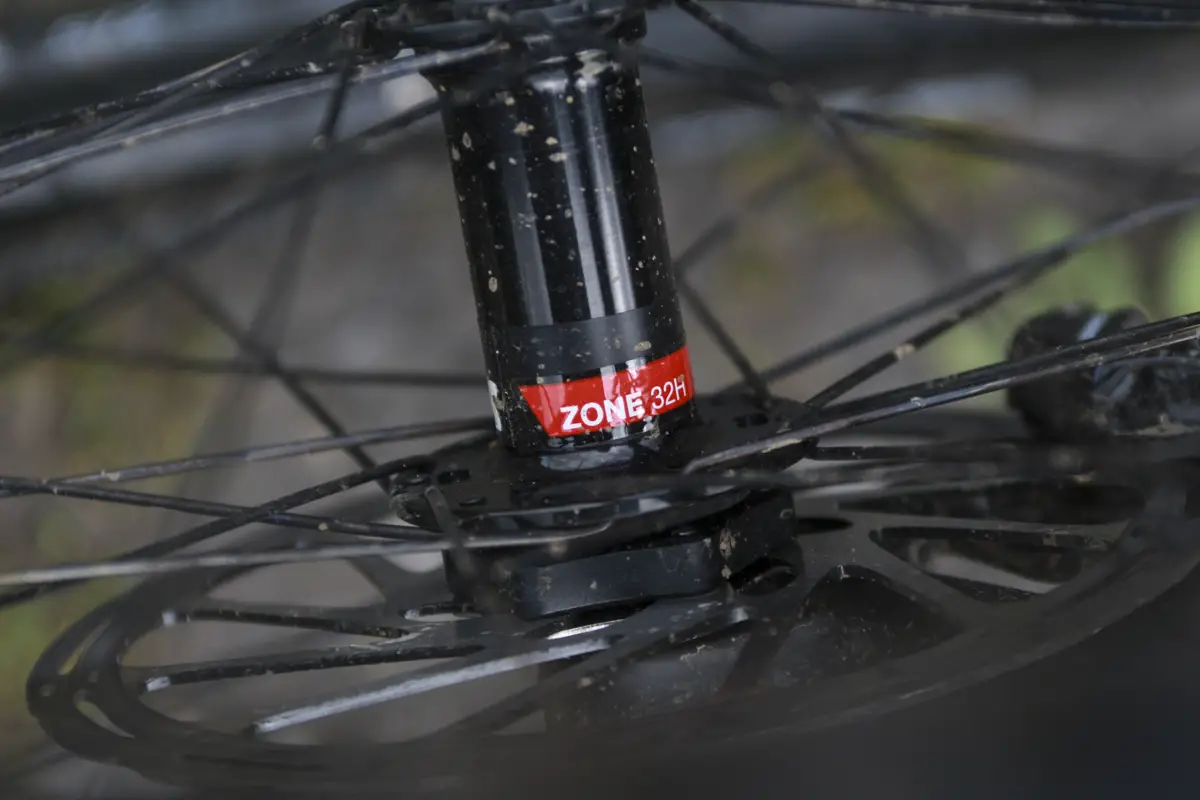
On the note of weight, the DMR SLED has some. 14.79 of the finest earth-kilograms to be exact, putting it on the bigger-boned side of the enduro bike spectrum.
In terms of finishing details, the SLED is equipped with a Syntace X12 thru-axle out back, and there’s a custom Praxis Works upper chainguide that mounts directly to the Orbit Link. The SLED also gets internal cable routing through part of the downtube, but it’s for such a short section that I’m not convinced it’s worth the hassle when the cables run externally everywhere else.
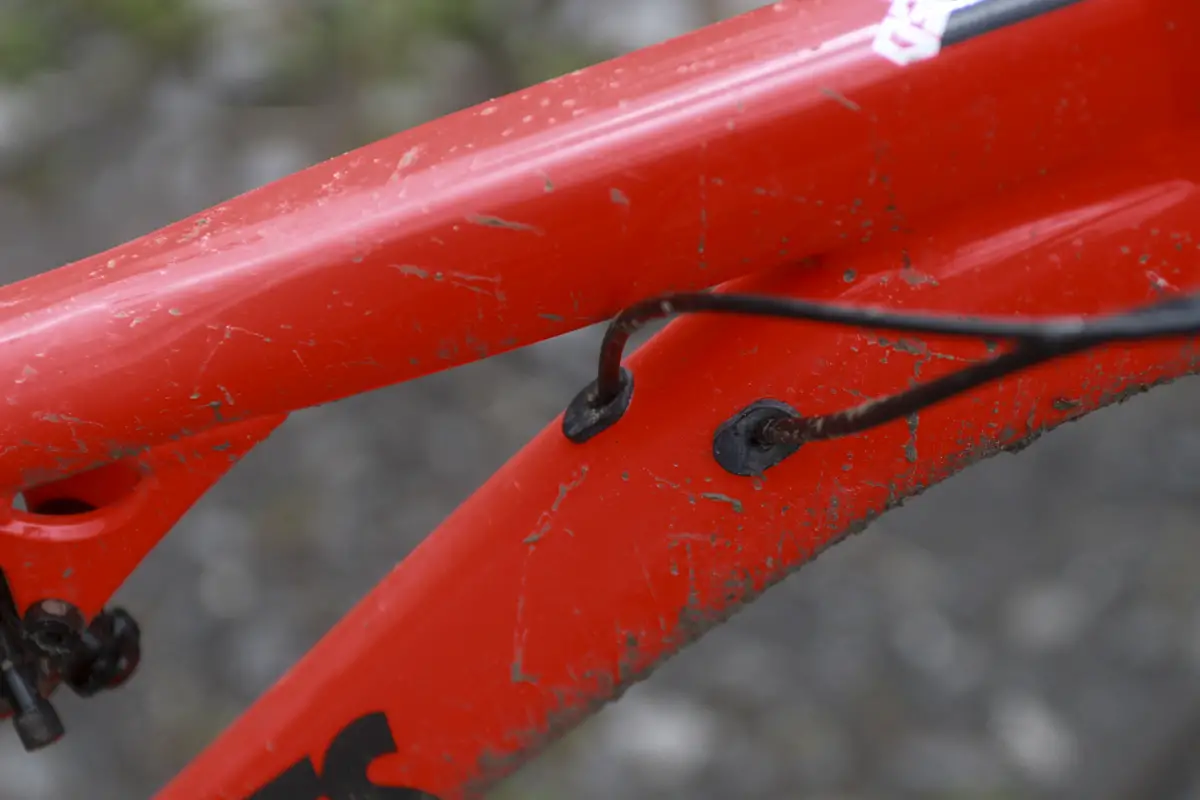
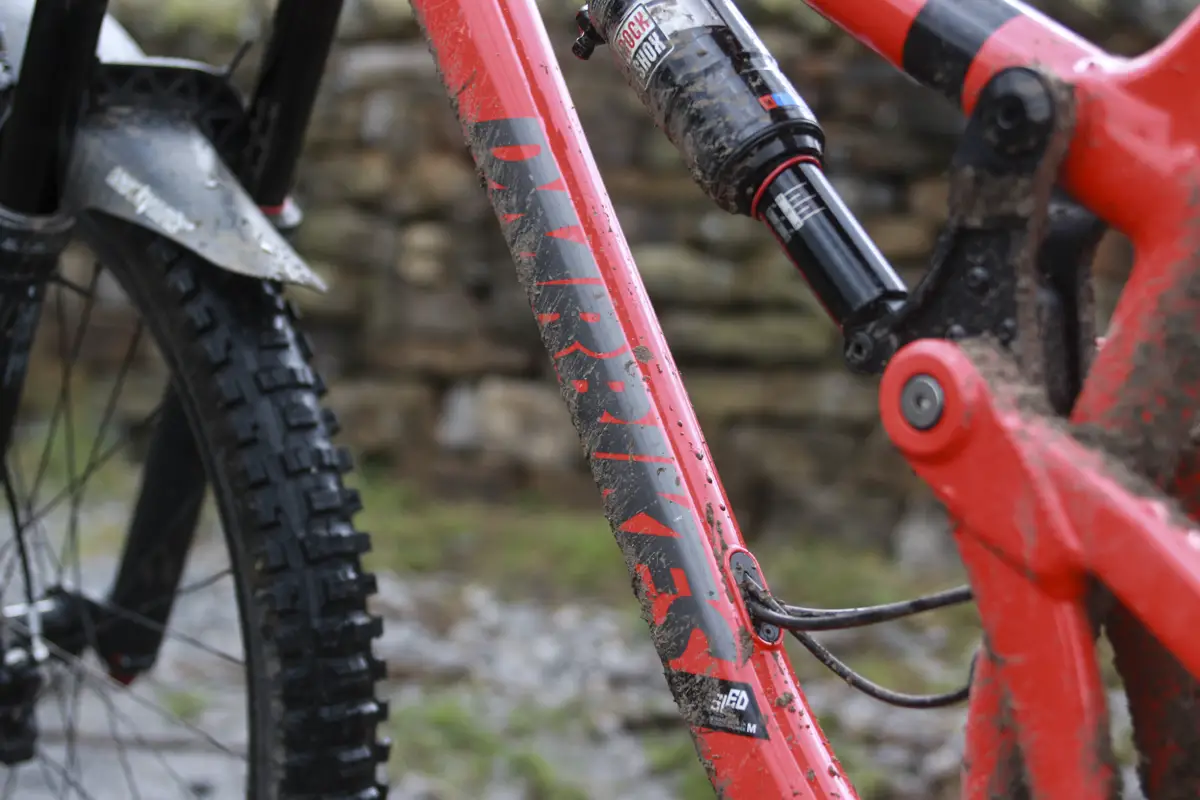
Also slightly annoying is the lack of room for a water bottle inside the main triangle, though you can fit one underneath the downtube if you ride in areas where cows do not dwell. One other neat feature is DMR’s Ride Saver Mount – a small strap system that bolts onto the seat tube just above the BB shell, which allows you to port along a tube, tyre levers and CO2, without any need for unsightly electrical tape.
The Ride
To get setup on the SLED, I aired up the rear shock to 180psi to put me at 30% sag for my 70kg riding weight. The Monarch comes sans volume spacers from the factory, which was spot-on for my riding, but heavier or more aggro riders can easily add volume spacers to increase bottom-out support as required. The shock is a big unit – it measures 216x63mm, which gives the rear suspension an average leverage ratio of 2.53:1.
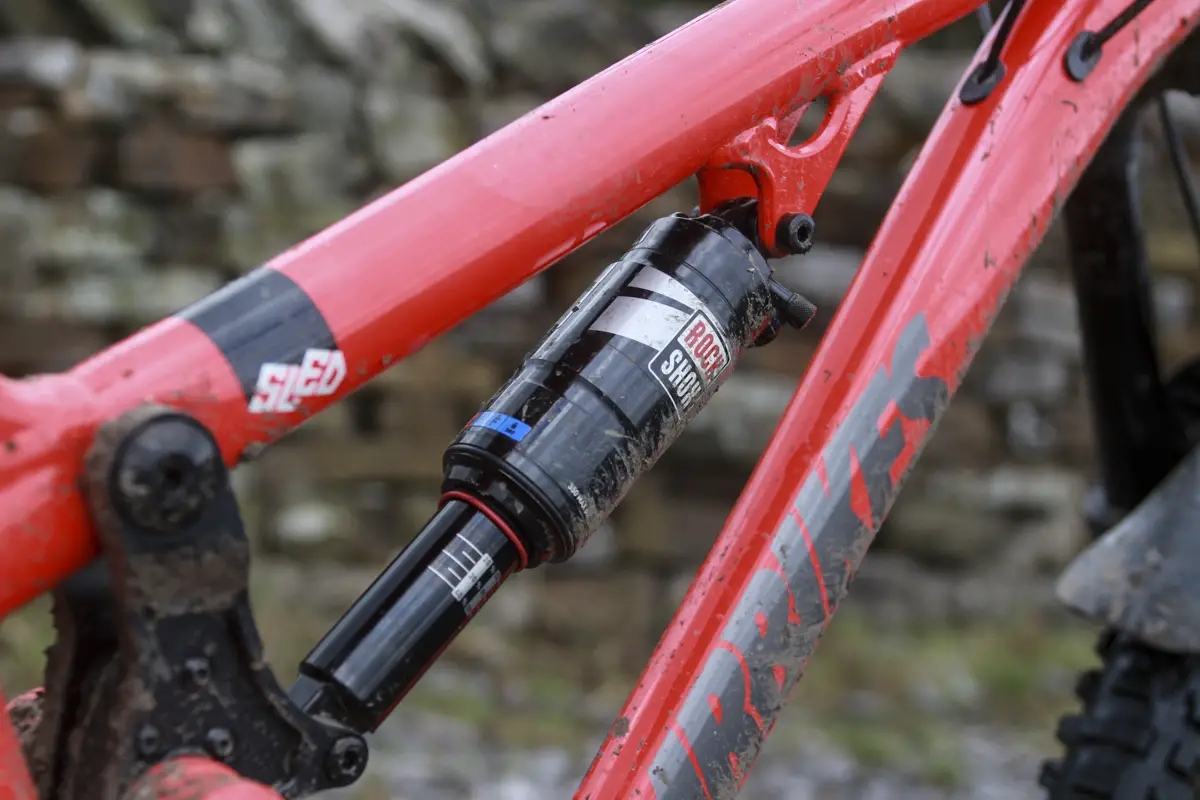
As for the Lyrik, it comes from the factory fitted with a single Bottomless Token. Not being one for large hucks, I found myself struggling to get full travel, despite dropping the air pressure down to about 55psi. After removing the single Bottomless Token and bringing the air pressure back up, I settled on 63psi inside the main air spring, which gave a nicely balanced feel with the rear suspension. Rebound was set on the slower side, with both the fork and shock set 3-4 clicks slower than halfway.
Sitting aboard the SLED and looking down at its huge front tyre, slack head angle, and big handlebars, there is very much a mini-DH feel about the cockpit. It immediately feels ready, willing and able to be pushed off of very steep things.
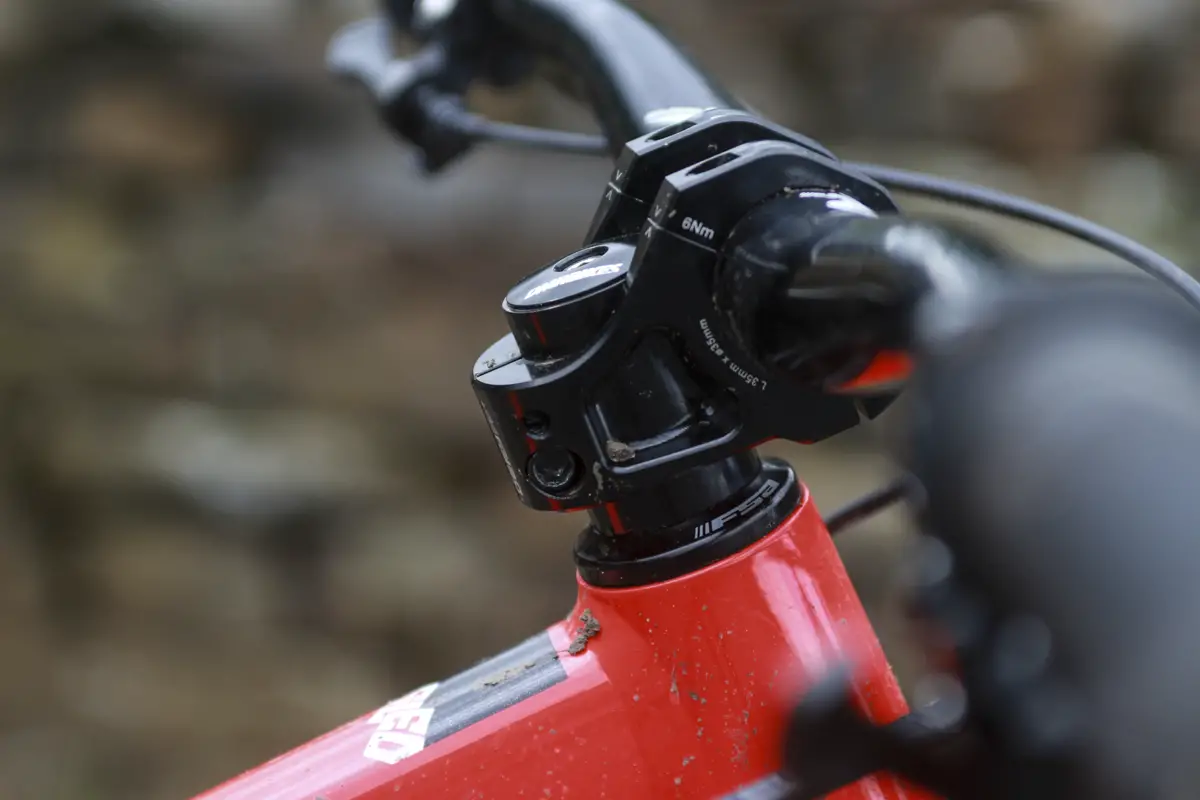
Each size of the SLED frame is built with a good length top tube that’s designed specifically around using a stubby 35mm long stem. DMR wanted to ensure that there would be no need for you to ‘upsize’ just to get that longer front centre, so they’ve made sure each size is nice and roomy. Our medium test bike comes with a 442mm reach, so I’d say they’re on the money here.
For me at a height of 175cm, the SLED fitted with no complaints, though the ape-hanger bars do feel pretty ‘out there’. Personally, I’d look at narrowing the bars a touch, which is easy enough to do with a fine-tooth hacksaw. However, I’ll point out that the medium test bike also worked well for Rob Crayons, who stands at 180cm tall and is a lot more broad-shouldered than I am.
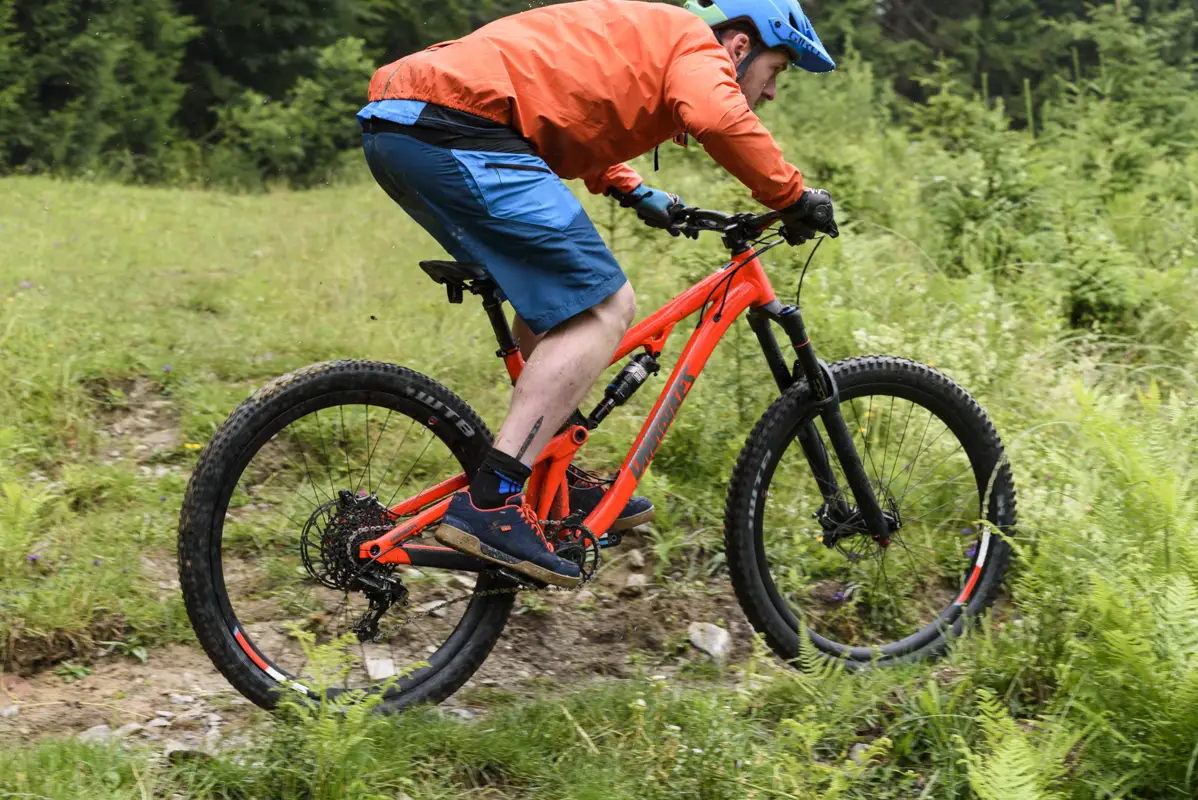
Those big bars do feel a bit wiggly at first, and particularly on flatter terrain at slower speeds. It doesn’t take a whole lot of time to adjust to the active steering feel, but tackling steeper climbs will see more wheel flop compared to a bike with sharper angles. That said, increasing the stem length by 10-15mm would be worth doing to help slow down the steering a touch.
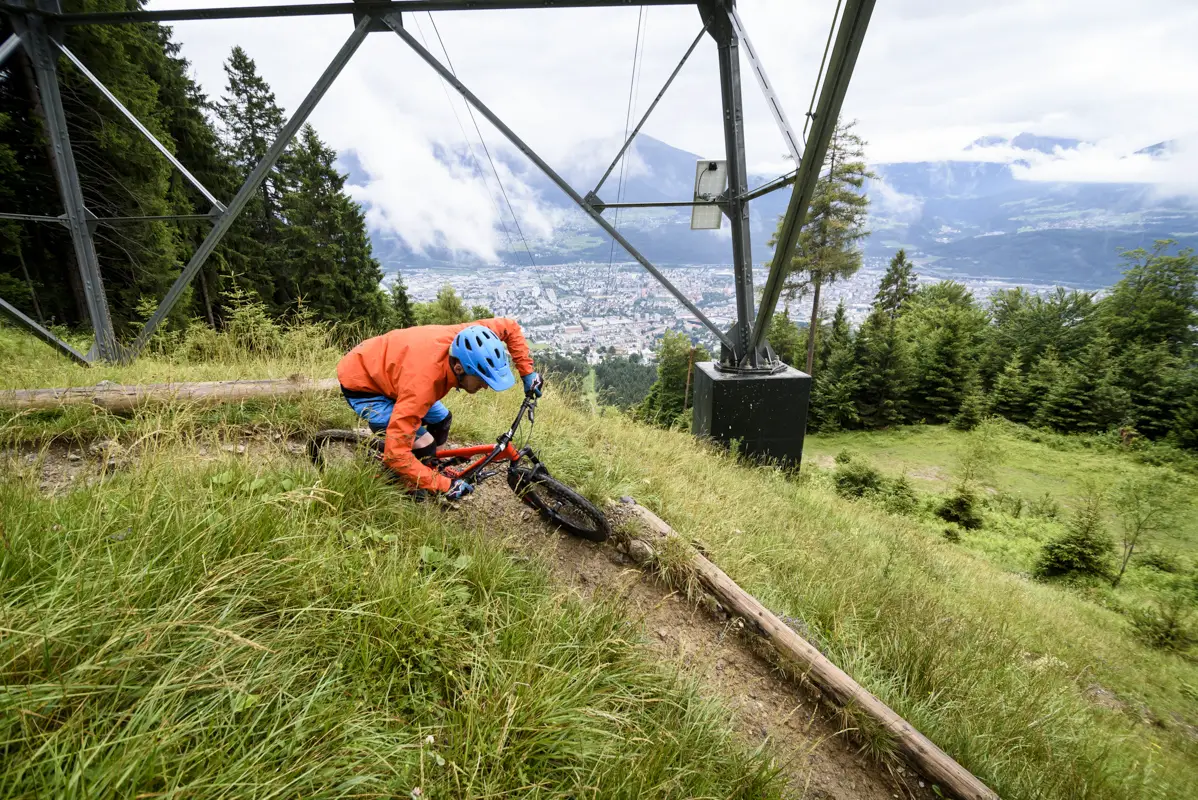
On the first big long climb on our local test loop, it wasn’t the SLED’s uphill handling at the forefront of my mind however. What my attention was drawn to was the bike’s incredible pedalling characteristics. Seriously, for a 160mm travel bike that weighs almost 15kg the SLED pedals unbelievably well, and that’s down to the excellent rear suspension kinematics.
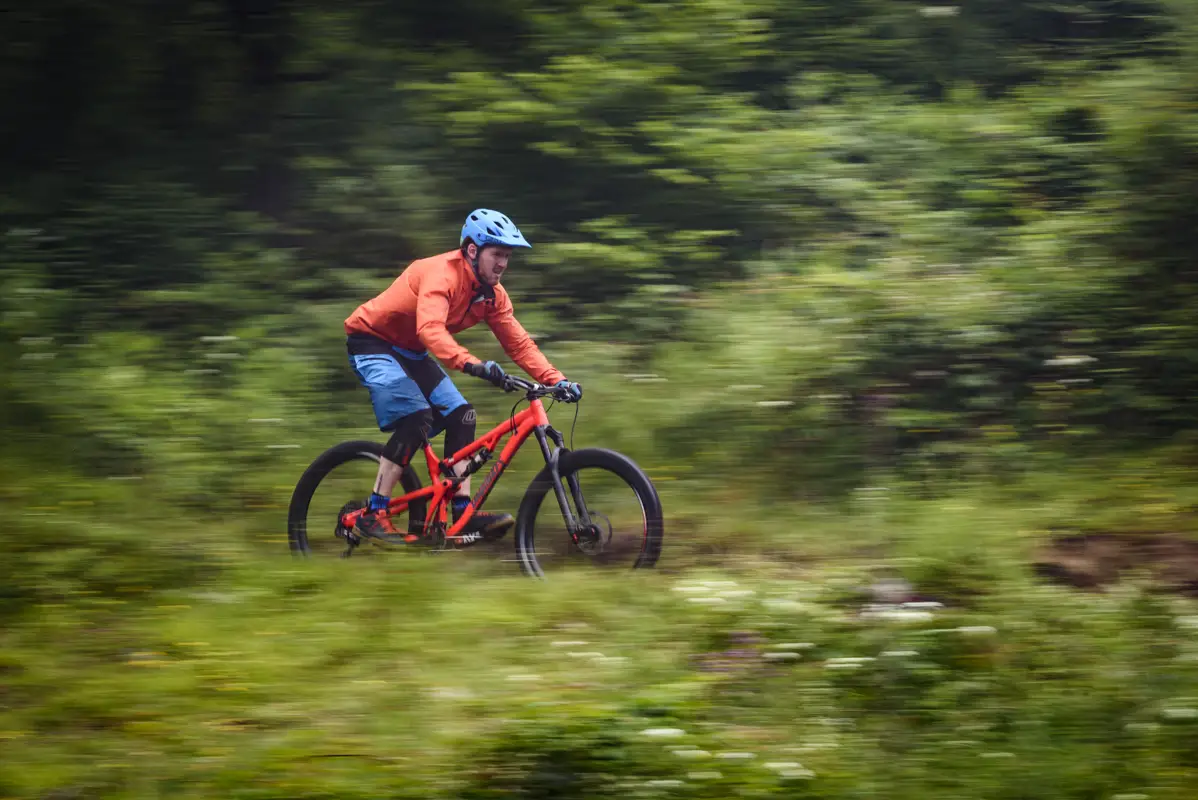
By design, the Orbit Link suspension design is highly effective at neutralising the effect of pedalling on the rear suspension. By allowing the chainstay length to ‘grow’ as the suspension compresses through its travel, chain torque (from pedalling) essentially pulls the rear wheel back in towards the bottom bracket. This acts against the chainstay extension and therefore, reduces pedal bob.
And it works really well – stand up and hammer on the pedals, and there’s a noticeable firming of the rear suspension feel as the SLED tightens up and puts your power to the ground. In tandem with the short 430mm chainstay length and stiff chassis, the SLED feels surprisingly responsive and enthusiastic for a bike of its mass and travel. See a lip or a double ahead, leap out of the saddle and hammer the pedals, and the SLED stands to attention and bounds towards the take-off with the enthusiasm of a dirt jump hardtail.
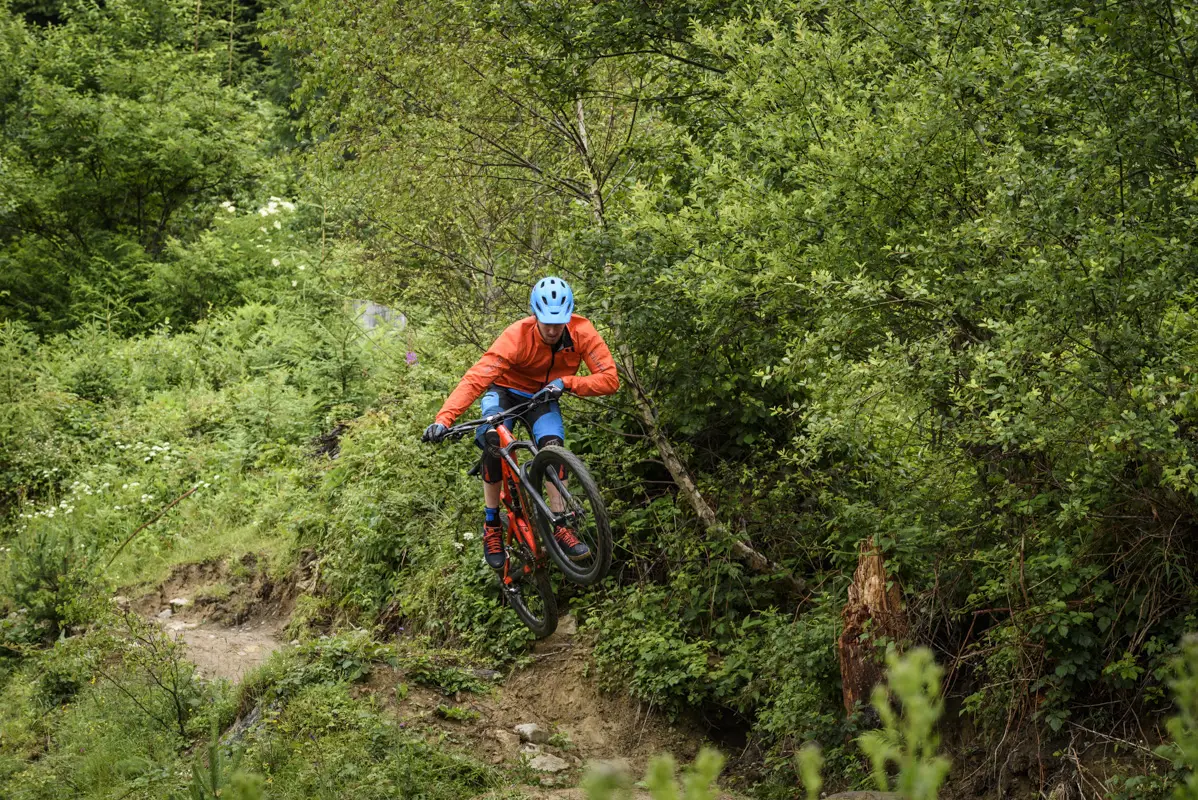
Speaking of jumps, the SLED lives for getting airborne. Although that is most certainly not my forte, Rob Crayons had no hassles sending the SLED off every lip, double and tabletop he could find on the trail. There’s good progression built-in to the shock curve that allows the SLED to remain supported when landing heavily back down to earth, though with room for up to six volume spacers inside the air can, jumpy types have plenty to work with for increasing that ramp-up if needed. Along with those big ape-hanger bars and short stem, the SLED is a bike that relishes in being leant over hard through big berms, before being pumped and rolled through the types of rhythm sections that are becoming more common on new-school machine-built trails. Oh, and if you can manual a bike, you’ll find the SLED a match made in heaven – this thing loves the back wheel.
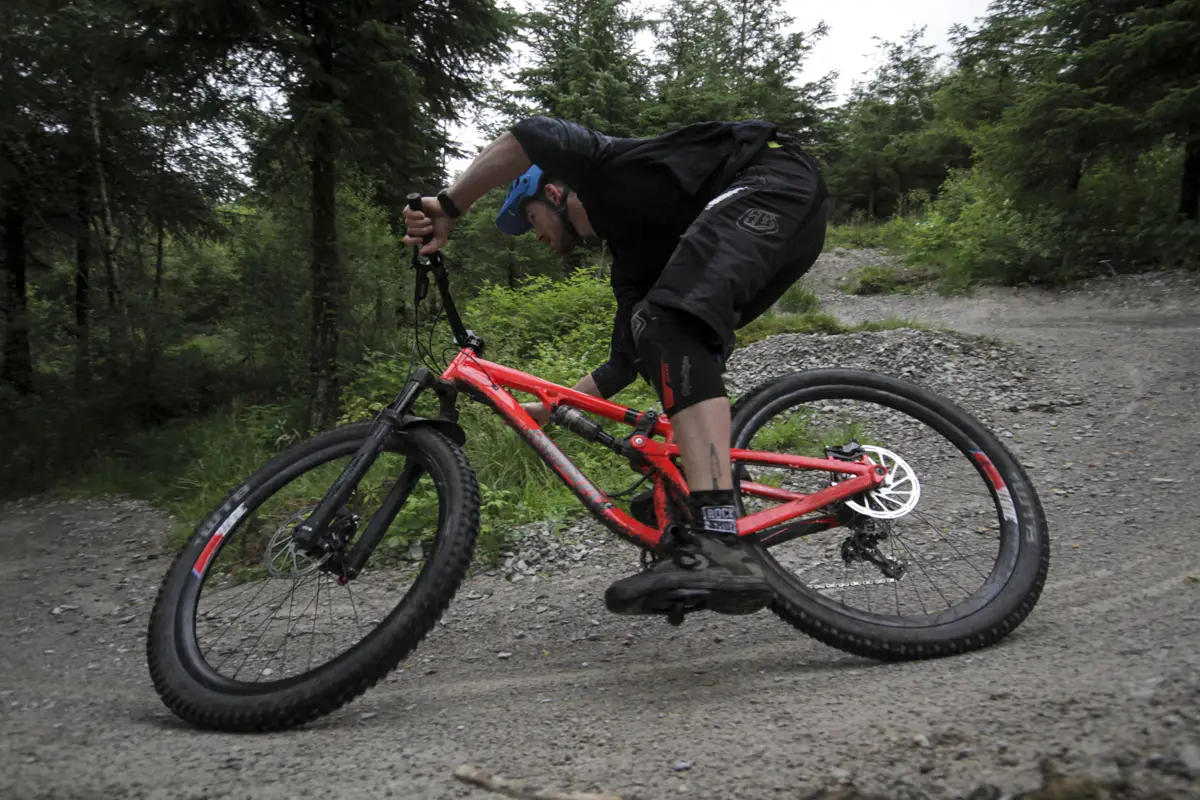
Despite the in-built pedal efficiency, the suspension is still useful however. The Lyrik fork and Monarch DebonAir shock is a winning combination, with a supple starting stroke to the front and rear travel that allows the bike to soak up small trail chatter beautifully well. The stout flex-free frame no doubt helps here too, with all the pivots tracking straight and true as the SLED is bombarded with both on and off-camber hits.

Unless the trees were particularly narrow, I found the SLED to be highly confident when being directed down into steep chutes and fast wide-open sections. The WTB Convict front tyre is massive for its claimed 2.5in width, and the aggressive moto-style tread pattern handled loose conditions like a champ. The rectangular blocks also serve to add loads of braking traction for picking lines down steep slow-speed tech sections, and combined with the highly sensitive Lyrik fork, loaded me with confidence for pointing and shooting.
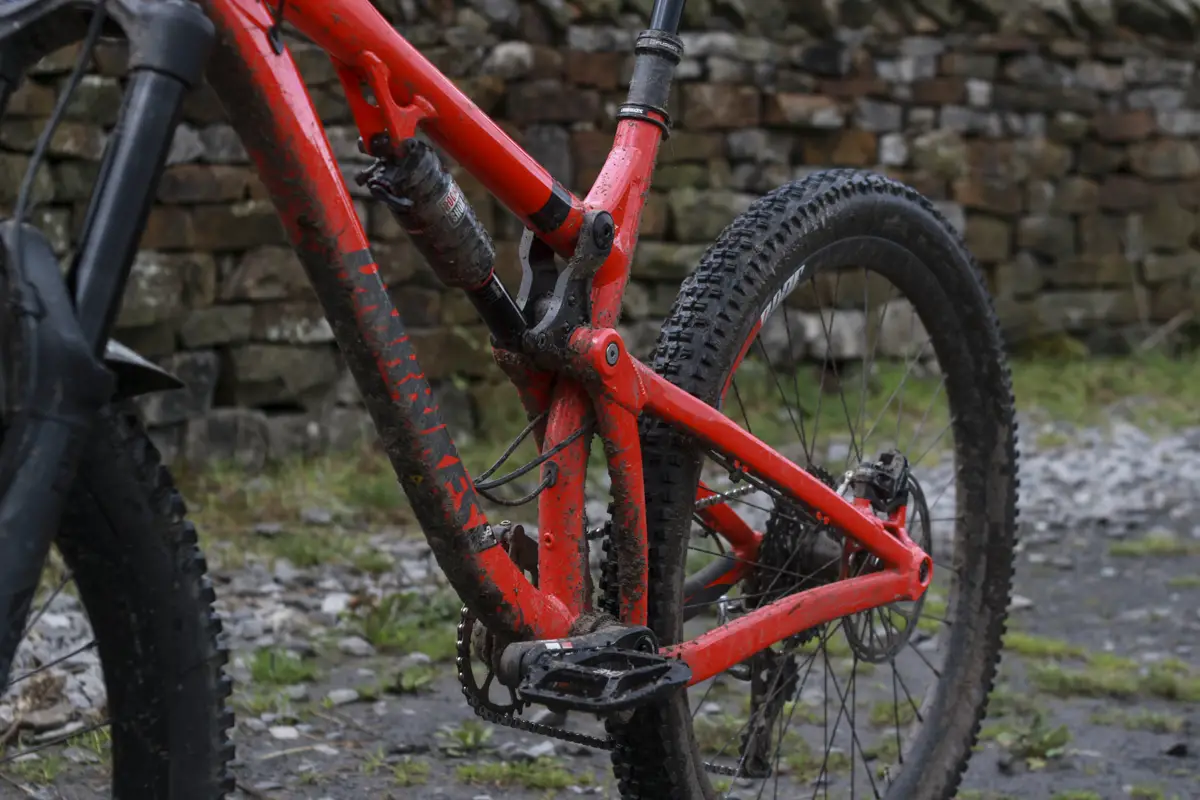
The rear tyre on the other hand was not so great on anything other than dry hardpack. On the wet slabby rocks that litter the Pennines around Calderdale, the Trail Boss was horribly slippery at speed on the downs, causing the rear wheel to skip out violently without warning. It was also disconcertingly spinny on the climbs too. There were several climbing sections that I had to abandon ship on the SLED, where the rear tyre span out without warning, causing a close knackerage encounter on the top tube. For riding hardpack manmade trails and such, the Trail Boss tread will be fine. But for hooking in to rougher, more natural trails littered with rocks, gloop and soft soil, I’d look at fitting something more aggressive.
The only other performance issue I encountered with the SLED was when riding faster and choppier terrain, where the rear suspension didn’t feel as plush as it does elsewhere. On the small-to-medium hits it’s fine, but when bigger hits arrive with more rapidity, there’s a slight hang-up to the rear suspension, as if the rear shock feels is closing up somewhat.

This sensation is a byproduct of the suspension’s interaction with chain tension. The same kinematics that provide the SLED with its excellent pedalling manners are also responsible for the slightly restricted feel to the rear suspension on these more violent repeat impacts.
To test this theory, I sessioned one of my regular descents with the chain both on and off the bike. With four runs in total, I rode the first run with the chain on, the second with the chain off, then on again, then off again, so I could get a good feel for the change in suspension action, while accounting for fatigue and line choice.
Although subtle, the difference in suspension behaviour was noticeable, and particularly when manualling the rear wheel into a square-edged rock slab about halfway down the descent. With the chain off, the rear shock swallowed the hit with impressive diligence – almost like the bump wasn’t there in the first place. With the chain on however, the rear wheel still moved out of the way, but with noticeably more resistance. The result was that more of the impact can be felt through the pedals and grips, as the rear wheel struggles to overcome the chain tension that’s built into the system.
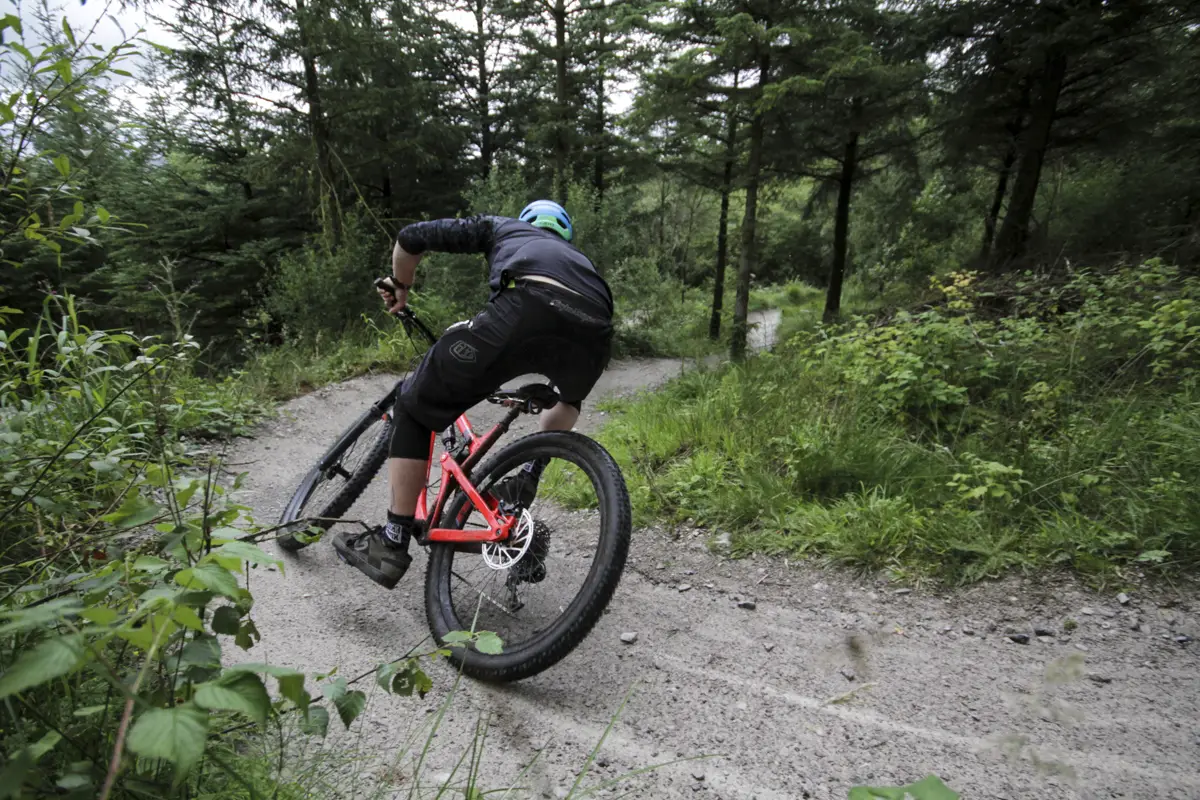
Ultimately this was a rather specific experiment, and the reality on the trail is that this characteristic isn’t overly dramatic. It should also be said that almost every suspension design on the market has some chain growth built into them, and so the SLED is certainly not on its own in this regard.
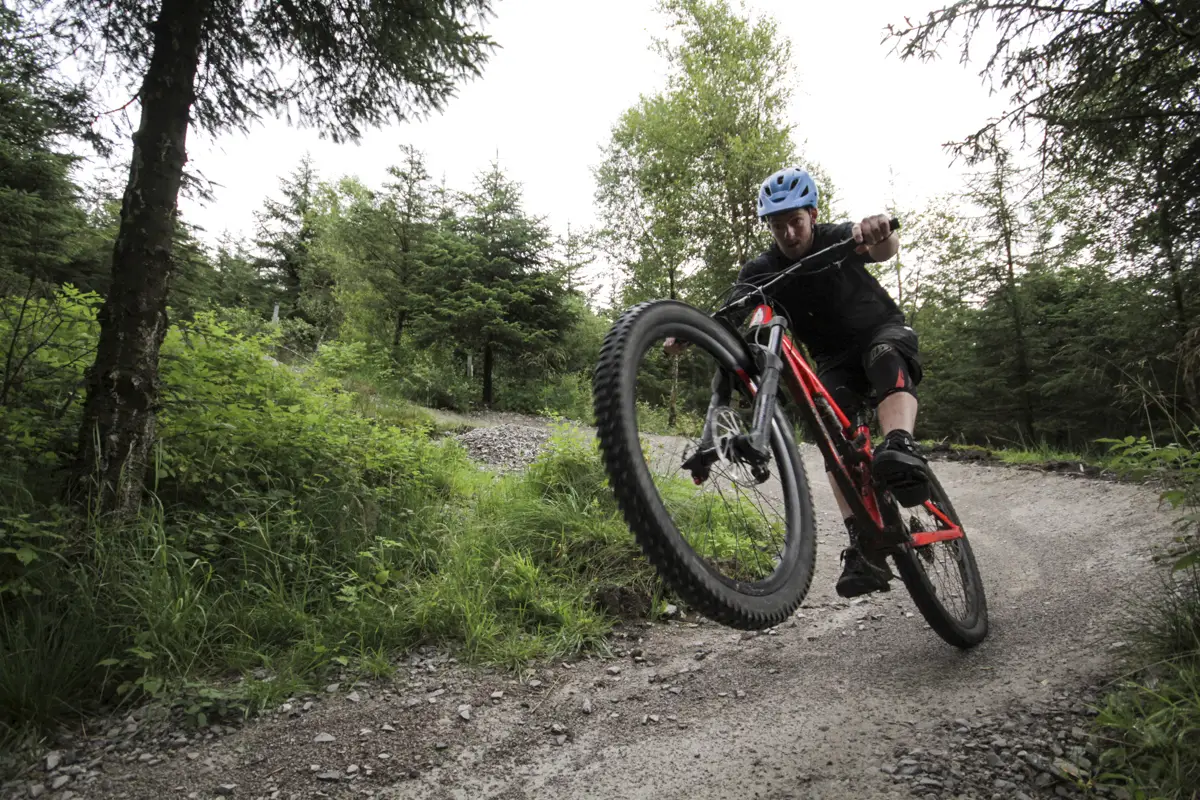
It also comes down to the types of trails you’re riding and how you expect a bike to handle. On the sort of longer and rougher natural descents you’d find up in Scotland, the Lake District and in the Alps, the increased feedback through the Orbit Link suspension design may not isolate you from the trail as much as you’re hoping for. Then again, some riders love that characteristic, but I found it fatiguing. As for blasting around flowy machine-built trails and launching doubles and drops, there is no doubt that the SLED is an absolute scorcher of a trail bike. In that regard, I’d say the DMR SLED is more Whistler A-Line rather than Megavalanche.
Durability Notes
All up the SLED stood up to everything we could throw at it throughout testing. We managed to put a very small ding in the rear rim after coming up well short on a landing, and the left-hand brake lever has seen better days after smacking the ground beneath a wooden ladder section. That said, the lever did bend at its intended pinch-point, ensuring that it took the brunt of the impact, and not the master cylinder.

I wasn’t a big fan of the non-locking grips, which were rather slippy on the gloss-finish handlebar. I swapped them for some lock-on grips early on in the test period, but I’d much rather see DMR spec the excellent lock-on version of the excellent Deathgrip… er… grips.
This was our first experience with the new X-Fusion Manic dropper post, which has a truly brilliant handlebar remote. The textured paddle offers usable traction even with wet and muddy gloves, and it’s fully adjustable for getting the position dialled in.
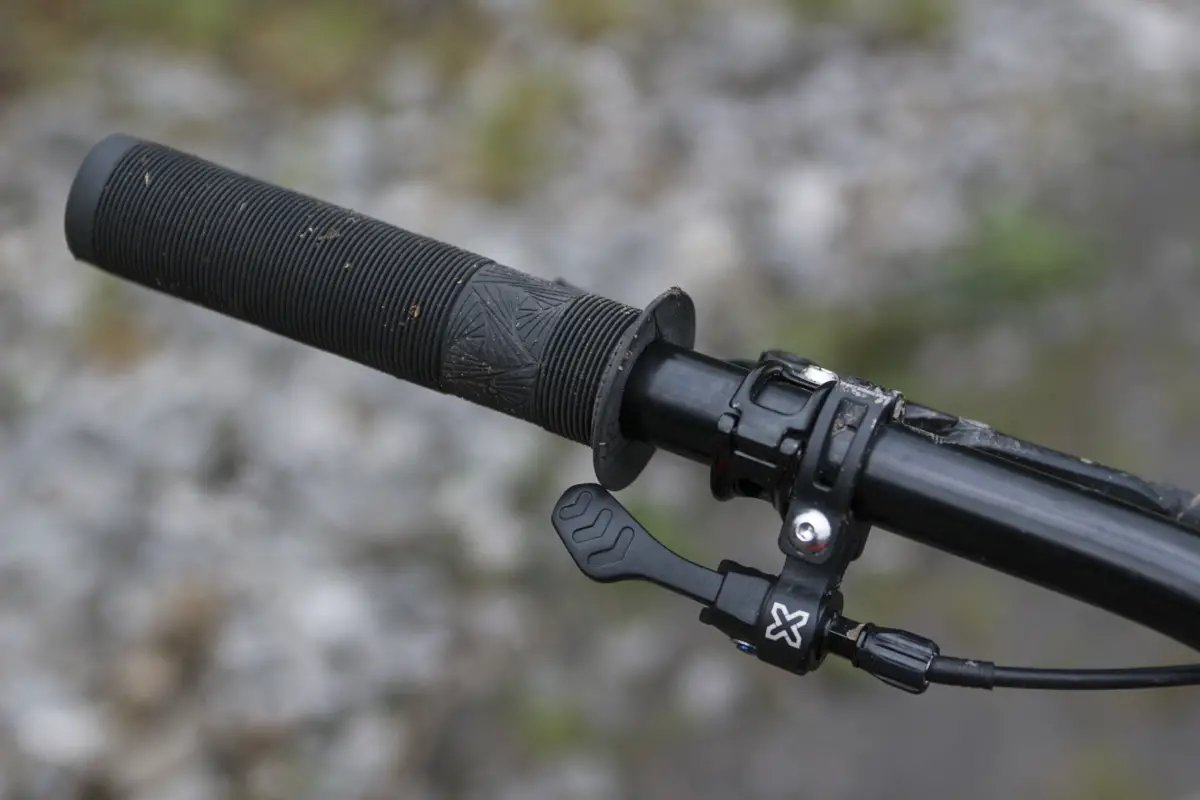
The post action itself was smooth and very light, with a rapid and audible top-out at full travel. Towards the last couple of rides on the SLED however, the post developed some resistance around the 50mm mark. This was noticeable in both compression and return, where the post would bind up slightly, as if an internal bush had developed a slight kink at one point. I’m not entirely sure if this was caused by crash damage, but it definitely wasn’t a symptom of over-tightening the seat collar on the frame. I’d also like to see more travel than the stock 125mm, and while DMR has informed us that the large and extra-large frame sizes will come fitted with 150mm travel droppers in the near future, that length should be spec’d on the medium too.
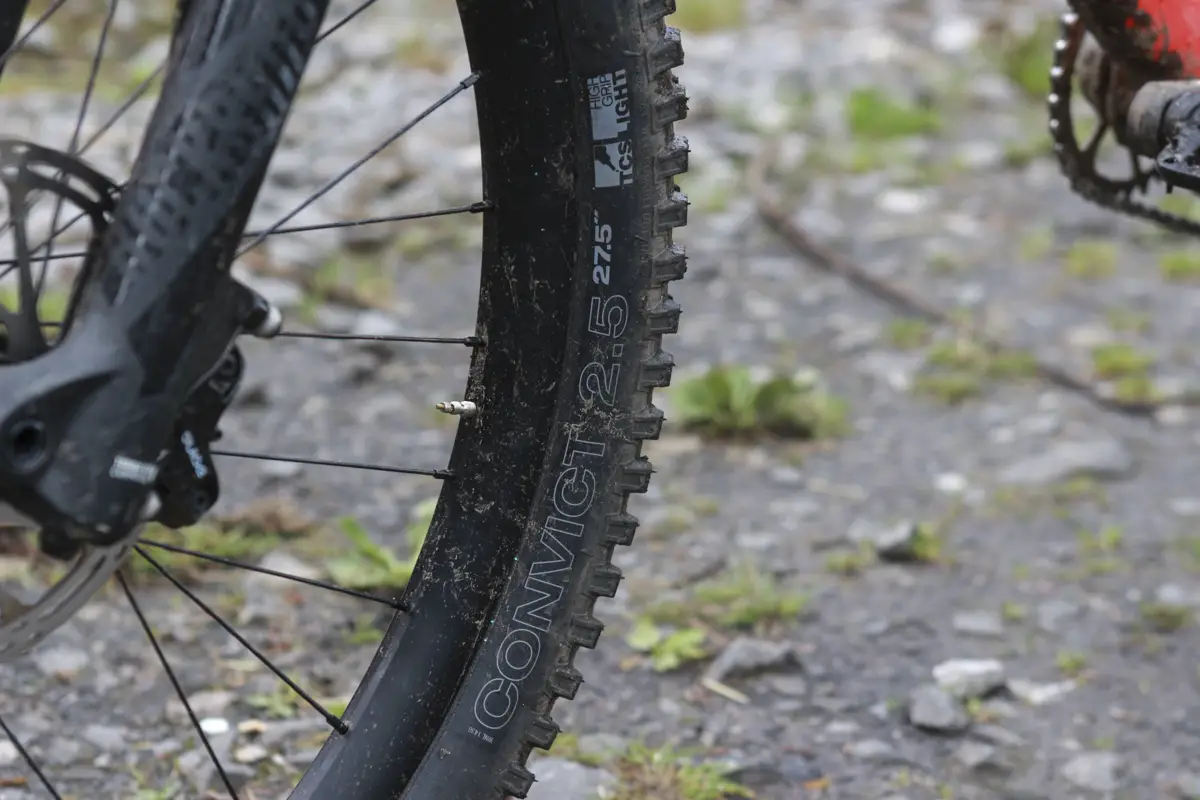
The WTB Trail Boss tyre didn’t impress me with its traction, and it also let us down with several punctures throughout testing. DMR has spec’d the TCS Light casing for the Trail Boss, which sees it weigh in at a very svelte 828 grams (compare that to 1083g for the front tyre). It’s far too light and thin for a bike like the SLED that’s going to see some pretty rough riding, and I’d prefer to see the TCS Tough casing used for at least the rear tyre.

Shifting was pretty good throughout testing, though the GX derailleur lacked some of the snappiness that I’d normally expect from a SRAM 11-speed mech. After fitting a hanger tool on to check the alignment, I found that the Syntace hanger could shift in its groove ever-so-slightly when pressure was applied to it. This wasn’t an issue under normal riding circumstances, but if the derailleur takes a knock or is pressed hard enough, there may be enough movement to shift the hanger offline, resulting in less than ideal shifting.

Three Things That Could Be Improved
- I’d trade some of the pedal efficiency for a more active suspension feel on faster hits
- Swap the WTB tyres to the more durable TCS Tough casing – especially the rear
- A dropper post with more than 125mm travel to take advantage of the SLED’s low-slung frame

Three Things What We Loved
- Enthusiastic ‘up for it’ ride quality combines short-travel pep with big-bike confidence
- Incredible pedal efficiency gives it loads of up and go
- Mighty tough frame and suspension package is big-hitter and big-rider friendly
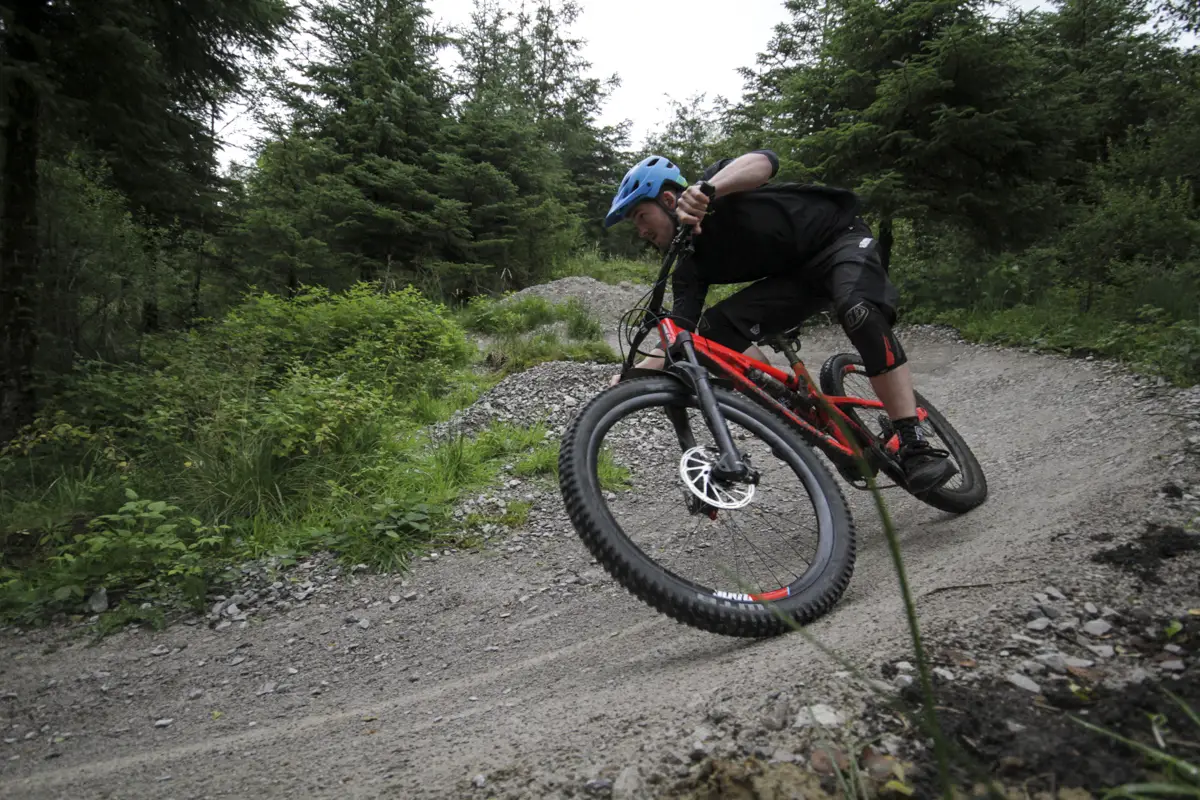
Overall
As DMR’s first entry into the long travel suspension market, the SLED is a tough and well-built frame that’s gagging for punishment. Its beefy alloy frame may not be the lightest out there, but thanks to the stout linkages and oversized sealed bearing pivots, it’s built to last.
I was surprised at how well the SLED pedals for a 160mm travel enduro bike, and along with its short back end and stiff frame, it offers a highly responsive ride quality that encourages you to push it harder and further.
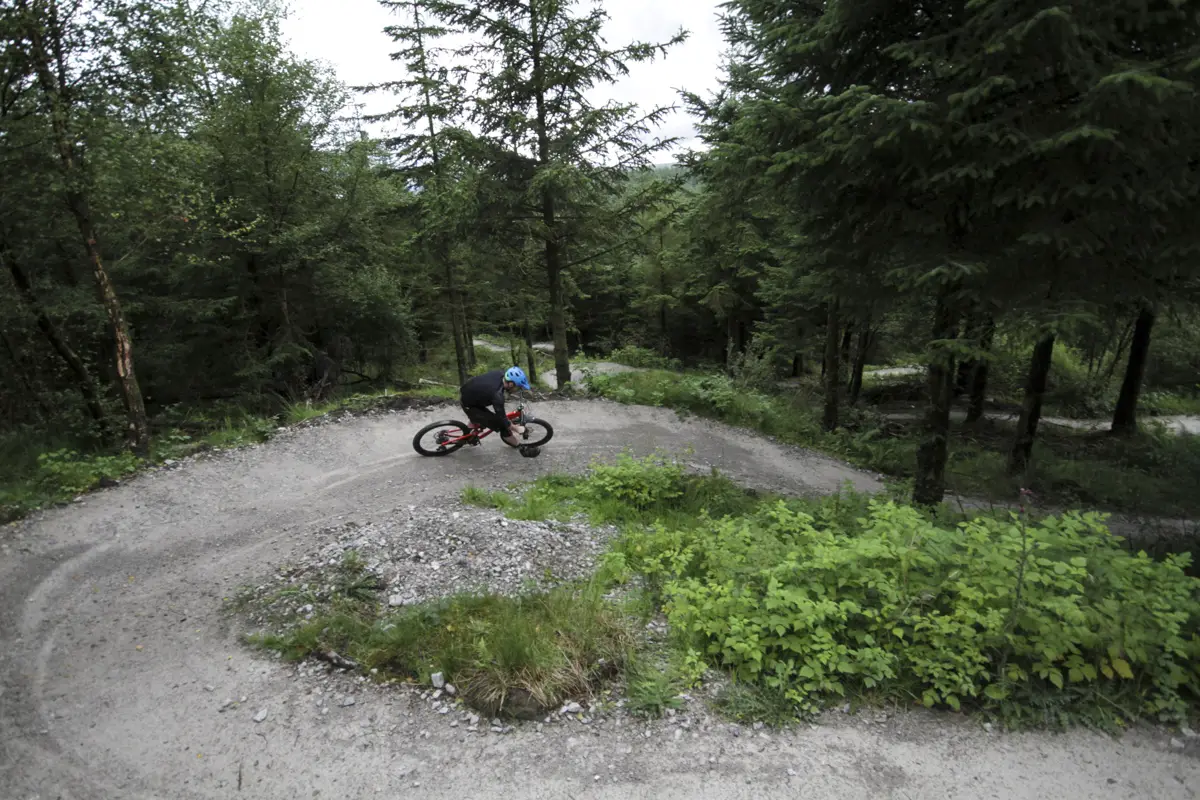
The Orbit Link doesn’t quite offer the big-hit munching capabilities of more neutral suspension designs, which is noticeable on rougher natural trails. But it does make the SLED impressively responsive under power. In that sense you can feel DMR’s dirt jumping DNA flowing throughout the SLED, and on bigger machine built trails where you’re sprinting out of corners and accelerating into the take-offs, the SLED is an absolute riot to ride.
In DMR’s words, the SLED is “our summary of MTB. It’s our tool for extracting fun out of every turn, speed from every feature, and laughter from every trail“. And I’d say they’ve achieved that. This bike has it’s own character, and one that’s distinctly DMR.
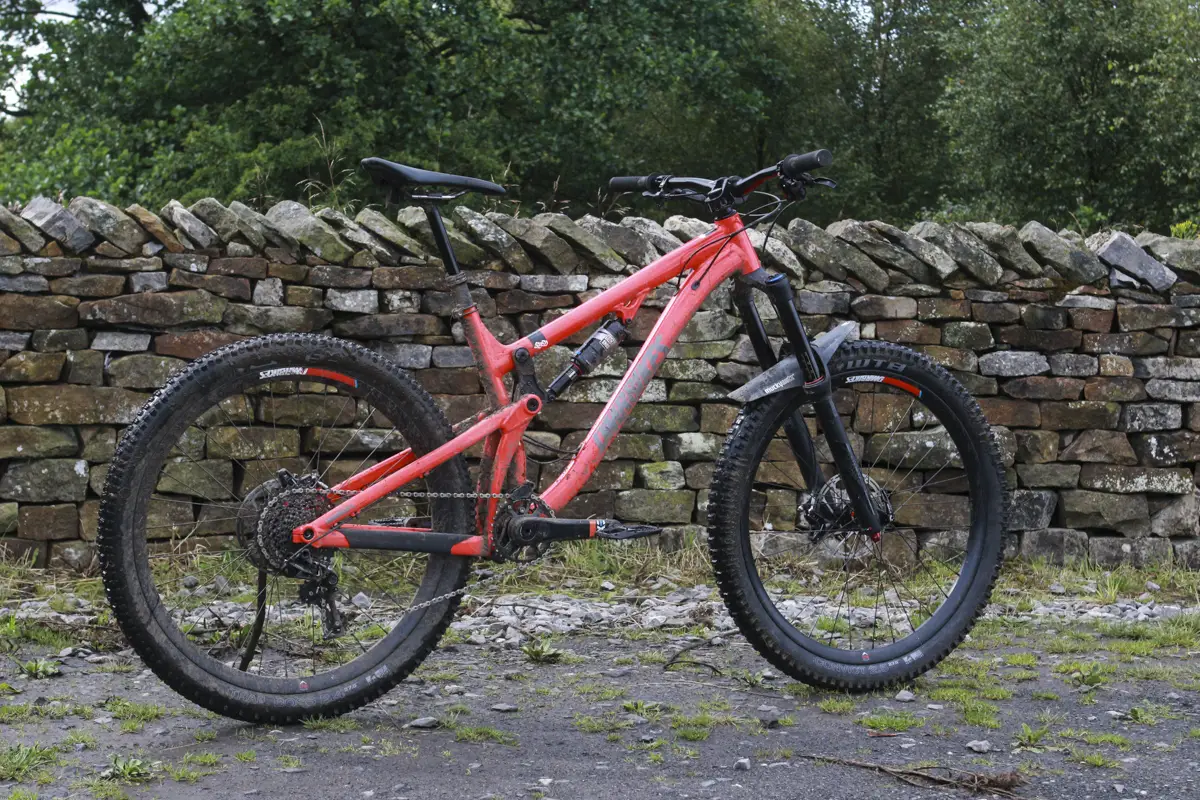
DMR SLED Specifications
- Frame // Custom 6061 aluminium tubeset, 160mm Travel
- Fork // Rockshox Lyric RCT3, 170mm Travel
- Shock // Rockshox Monarch
- Hubs // DMR Zone, 110x15mm Front & 148x12mm Rear
- Rims // DMR Zone, Tubeless Ready
- Tyres // WTB Convict TCS Light 2.5in Front & Trail Boss 2.4in TCS Light Rear
- Chainset // DMR Axe M30, 170mm
- Chain Device // Custom Praxis Works Upper Guide
- Front Mech // N/A
- Rear Mech // SRAM GX 11-Speed
- Shifters // SRAM GX 11-Speed
- Cassette // SRAM XG1150, 11-42t, 11-Speed
- Brakes // SRAM Guide R, 180mm Front & Rear
- Stem // DMR Defy 35mm Long
- Bars // DMR Wingbar MK3 Alloy, 800mm Wide, 20mm Rise
- Grips // DMR Sect Grip
- Seatpost // X-Fusion Manic, 125mm Travel
- Saddle // DMR Stage 1
- Size Tested // Medium
- Sizes available // Small, Medium, Large, X-Large
- Weight // 14.79 kg (32.54 lbs)





